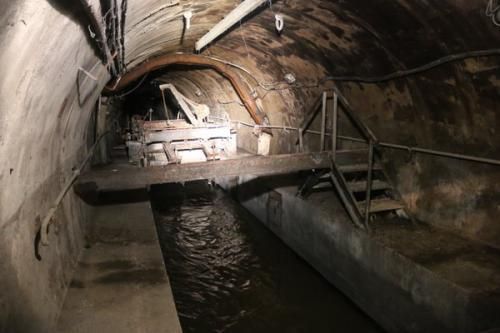The labyrinth of sewers winding their way beneath the Paris streets is as legendary as the city upstairs.
The system dates to about 1370 and today includes more than 1,300 miles of sewers. While the sewers have a very practical use, their description in stories such as Victor Hugo’s Les Misérables made them legendary.
“Paris has another Paris under herself; a Paris of sewers; which has its streets, its crossings, its squares, its blind alleys, its arteries and its circulation, which is slime, minus the human form,” Hugo famously wrote. While Hugo’s description of the sewers worked to set the scene of the story, the description is invaluable to historians studying the system.
Hugues Aubriot, a Parisian provost, is credited with building the city’s first covered sewer when he built a vaulted walled sewer in the “rue Montmartre.” Baron Haussmann is credited with the overhaul of the city’s sewer system in the 18th century during the reign of Emperor Napoléon III.
Before the sewers’ construction, the city’s wastewater was dumped into streets or fields and ultimately made its way into the river Seine, which also served as the city’s source of drinking water.
For anyone interested in learning more about this complex maze winding its way beneath the Parisian streets, a visit to Le Musée des Égouts de Paris (the Paris Sewer Museum) is an absolute must. The museum, located near the famous Pont de l’Alma in the city’s 7th arrondissement, chronicles the need for sewers and their construction.
The museum’s exhibits, posted in both French and English, are insightful and interesting. Exhibits include replica and actual equipment used in the upkeep of the system, such as a massive ball used to help clean the sewer.
An actual sewer line, complete with raw sewage, running below reminds museumgoers that while the museum and the city’s underground may be out of sight, it’s not always out of smell. While it may be less glorious than most, if not all, of the city’s other more famous attractions, it’s no less important to the development and growth of Paris into a global economic powerhouse.
A visit to the museum can take an hour or so, less for anyone who might be unable to keep their olfactory senses in check. Plus, the gift shop sells stuffed rats, for anyone looking to take home a keepsake.
Verdict: This museum stinks, but is worth the visit.
Support HuffPost
Our 2024 Coverage Needs You
Your Loyalty Means The World To Us
At HuffPost, we believe that everyone needs high-quality journalism, but we understand that not everyone can afford to pay for expensive news subscriptions. That is why we are committed to providing deeply reported, carefully fact-checked news that is freely accessible to everyone.
Whether you come to HuffPost for updates on the 2024 presidential race, hard-hitting investigations into critical issues facing our country today, or trending stories that make you laugh, we appreciate you. The truth is, news costs money to produce, and we are proud that we have never put our stories behind an expensive paywall.
Would you join us to help keep our stories free for all? Your contribution of as little as $2 will go a long way.
Can't afford to donate? Support HuffPost by creating a free account and log in while you read.
As Americans head to the polls in 2024, the very future of our country is at stake. At HuffPost, we believe that a free press is critical to creating well-informed voters. That's why our journalism is free for everyone, even though other newsrooms retreat behind expensive paywalls.
Our journalists will continue to cover the twists and turns during this historic presidential election. With your help, we'll bring you hard-hitting investigations, well-researched analysis and timely takes you can't find elsewhere. Reporting in this current political climate is a responsibility we do not take lightly, and we thank you for your support.
Contribute as little as $2 to keep our news free for all.
Can't afford to donate? Support HuffPost by creating a free account and log in while you read.
Dear HuffPost Reader
Thank you for your past contribution to HuffPost. We are sincerely grateful for readers like you who help us ensure that we can keep our journalism free for everyone.
The stakes are high this year, and our 2024 coverage could use continued support. Would you consider becoming a regular HuffPost contributor?
Dear HuffPost Reader
Thank you for your past contribution to HuffPost. We are sincerely grateful for readers like you who help us ensure that we can keep our journalism free for everyone.
The stakes are high this year, and our 2024 coverage could use continued support. If circumstances have changed since you last contributed, we hope you’ll consider contributing to HuffPost once more.
Already contributed? Log in to hide these messages.

